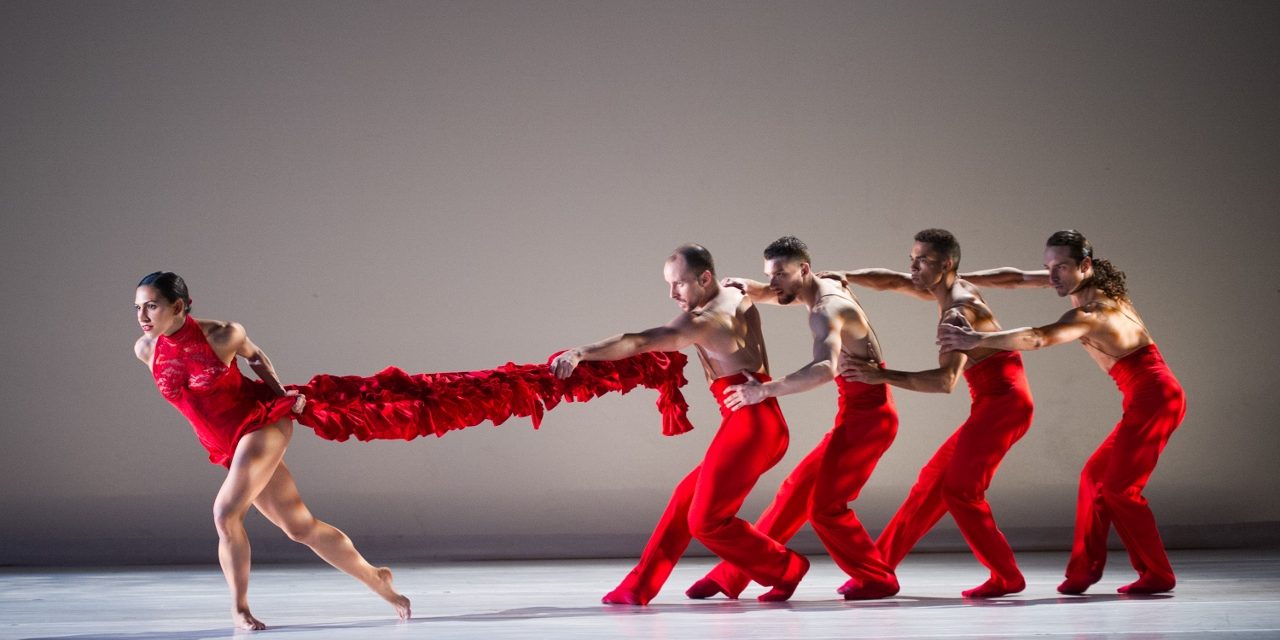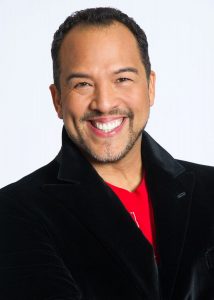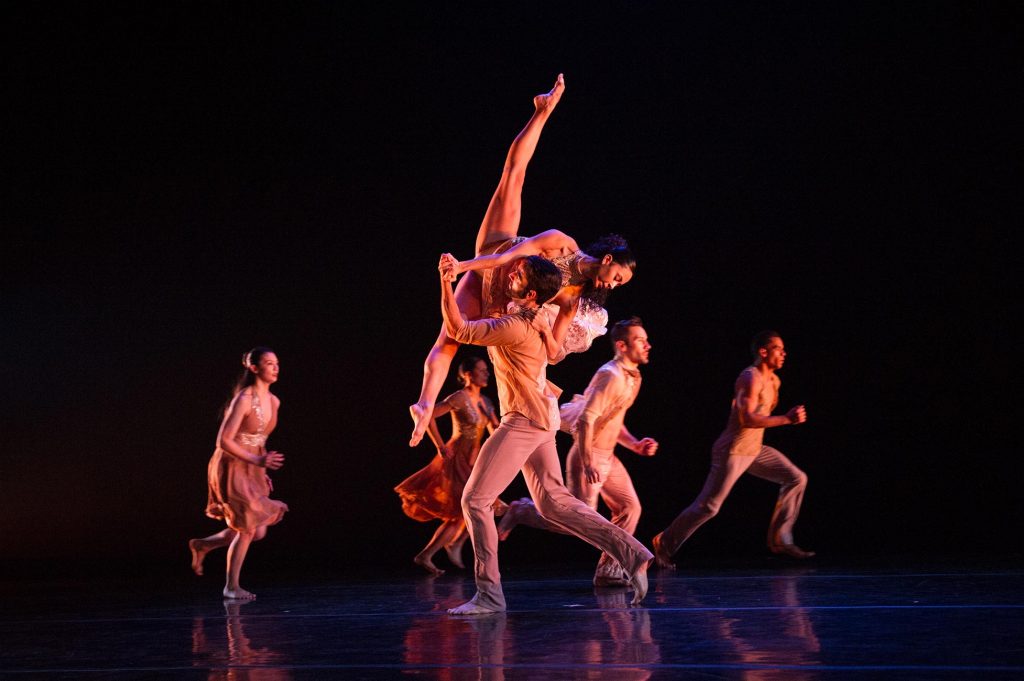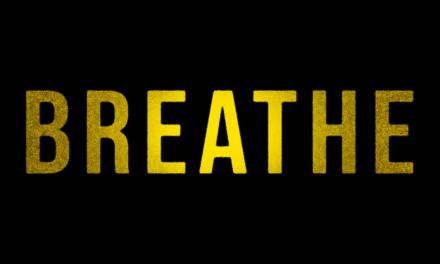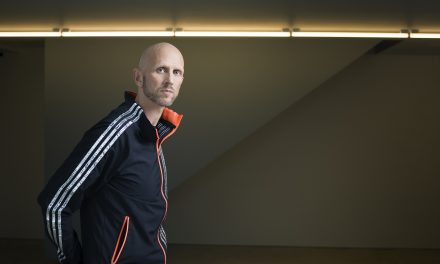In this political world of boarder walls and discrediting ethnicities…Southern California will be graced with one of the finest dance companies of our time, Ballet Hispánico (BH) performing at The Broad Stage on Friday, March 22 – Sat. March 23, 2019.
Its Artistic Director and CEO, Eduardo Vilaro took time out of his busy New York schedule to give us some of his thoughts on the future of this exceptional company. With his vision, Ballet Hispánico is breaking ground where few organizations have gone. The mission of social equity, sharing their cultural identities, creating inspiration and acceptance amongst the wider community inspires audiences nationally and internationally. With Vilaro’s vision, Ballet Hispánico is also becoming known for nurturing and developing talented young artists of all ethnicities as a light to the broader dance community.
In this interview Eduardo Vilaro was presented with questions, by interviewer, Joanne DiVito, that were geared to examine his thoughts on the inner working and the future mission of the company.
JD: Thank you for taking time out of your busy schedule to answer some important questions about Ballet Hispánico (BH). The company has been around since 1970, founded by National Medal of Arts recipient, Tina Ramirez. Both Ballet Hispánico and Luna Negra have been very influential in your life. Could you give us a little history on your path to becoming Founder of Luna Negra and now Artistic Director and CEO for BH? Along with that I think it’s good to examine the challenges and joys of your position as AD for the company.
EV: Ballet Hispánico has been a home to me, most of my performing career. I was a dancer back in the 80’s immersing myself in the mission of this organization, so when I left after performing with the [company], and beginning my career as an educator, Tina Ramirez, the founder of Ballet Hispánico, was instrumental in mentoring me in the love of dance education, not only in training, but in sharing this culture and art form with the world. So, Ballet Hispánico gave me such a great tool box of dance, having worked with many wonderful choreographers, and gotten to look at a diverse field of dance in that world.
With that great tool box, I moved to Chicago where I finished my Masters in Interdisciplinary Arts and Pedagogy. I wanted to do something totally different to look at my art form in diverse ways, which helped me get a sense of…Oh, if I had a dance company, this is where we’d go.
Once I was done with my Masters, something kept calling to me. There’s not enough organizations that celebrate the joy of this culture, so I started Luna Negra Dance Theatre in 1999 in Chicago.
Founding an organization from soup-to-nuts, from zero for a wonderful decade, grew into an exciting emerging organization in the Midwest. I was able to create Luna Negra because of the fortitude that that tool box had afforded me. For the next 10 years I created an interdisciplinary and cross collaboration with musicians and artists. It really helped me get into all other LatinX artists that were doing interesting things in the field. We were also talking then about the values and messages that Ballet Hispánico is so passionate about today.
JD: I have a burning question that I had wanted to address. I know with Ballet Hispánico, your passion and primary vision is social equity, cultural identity and quality arts education for the Latino Community. I am curious, how do you see a bridge that would inspire what your company presents as a light to the wider community considering your company is one of the most inventive, embracing and exciting companies today? And what do you consider are the most important aspects to that kind of expansion? My curiosity is also, why did I not know about this company sooner?
EV: I should just be clear about that cultural bridge. It is both to and from the Latino Community, so that everyone is welcome to share in these ideals of social justice and equity. That’s the thing about Ballet Hispánico, it is about giving access to everyone, to be able to immerse and learn about this culture, develop ways to learn about this community… and to include us in that dialogue.
JD: You mention social equity. Since this is, “The Year of the Woman,” Anabelle Lopez Ochoa, Tania Perez-Salas and Michelle Manzanales, are all strong, brilliant and talented female choreographers in your program. You have brought fantastic creative women in to work with the company. In the past and even now, many companies lock women out of that field, except on rare occasions. However, you not only bring them in…but you honor their talent. What is your sensibility, philosophy and willingness to nurture this talent?
EV: I just think it comes from exactly the mission of access. That is the backbone. It’s not only the access for the audience, but access for our artist.
To me there is no gender in art. So that means I must create a platform in our female leadership as well as the male leadership in terms of the Hispanic community and the Hispanic artists. So, one of the first things I did was to create a choreographic institute to give a lot of these emerging artist, or unknown artists [visibility].
One of the things we face as a cultural organization is Invisibility, just like you were saying, how do I not know about this organization? Well, because in the main stream, they’re not talking enough about us.
Here we are, it’s interesting, a couple of years ago Annabele Lopez Ochoa did a woman’s program at New York City Ballet, which we had already done years earlier, and the New York Times article mentioned all the other companies she worked for…never mentioned Ballet Hispánico. We were simply not included. Not one mention that she had been creating for Ballet Hispánico for years.
That’s my point… how do you get included in a certain cultural gaze. That’s an interesting thing we deal with…That is one of my challenges, a big challenge for me.
We have done a lot in the 10 years I’ve been here. And, because we’re touring more, certainly we are more recognized as an organization internationally.
JD: Yes, access and exposure is vitally important. I was also wondering, about your dancers that are so strong, beautiful and committed, how do you find them, and how do you inspire and encourage that kind of fire and quality in your performers and choreographer
EV: There are many processes I think for the artist. Of course, many times when we need a new artist or we have a transition, we have an audition, as any other company would. But a lot of the time I find dancers because we’ve worked with them in workshops, they’ve heard about us, they followed us, some of them have joined our second company first as young artist which has become sort of a feeder for our main company and that’s been very helpful.
But I think the best way is about developing relationships and the networking that you build with the other aspects of the company beyond the performances: Workshops in Universities, special classes in the community, the dance community, connecting. And I go to see dance as much as I can. I’m always looking at dancers. Someday I’ll end up in your studios. It’s always good to see the talent that’s out there.
As far as the rest of the organization, we believe in a very diverse group, we have that, not only culturally but age wise as well. The more that you have many voices talking about where to take this mission, the better. I love that we have such a diverse organization.
JD: As in Alvin Ailey, it’s rare that you have other than a black dancer. I was wondering if you have other than Hispanic or Latino dancers in your company or is that the primary hope that it will be specifically for the Latin community.
EV: My primary hope is always to have a dancer who exhibits excellence who can take the work we do and transcribe it onto the stage. That’s priority number one. Ailey is a very different culture and has a lot of its values based on the African American experience and color. We are so diverse as a culture, we come in so many different variations of race/color and that’s where I make the incision point. I show a little bit of everything on stage. We have a good percentage, maybe 60%, are Latino, the rest are everything…because we can look like anyone as far as race.
I have to say it’s a huge opportunity to have that culture dialogue because of what’s on stage, but it’s also a hindrance because everyone wants to box you into a look or a way of being. So, I’ve had to deal with even in interviews, when they say, Why aren’t they all Latino? and I say, What does a Latino look like?
I myself am a plethora of cultures, I have African, and Chinese, and Spanish because in my heritage we were a colonized country, I’m from Cuba. So that is tricky, it’s an opportunity and a challenge all at the same time. When you’re trying to assimilate a look to the dancers on stage I don’t think there’s any place for it. I salute Ailey, because they have much more diversity now, they have white and Asian…it’s dance, it’s art! We all share it!
JD: What is it that keeps you going?
EV: How do I keep going? My goodness! I have a family, I have an 11-year-old, that is exciting and changes my perspective… and it’s work…it’s a different kind of work. And I think that really balances me in a very interesting sort of way. It takes me out. Sometimes you can get stuck in what’s not happening and trying to set your goals. It’s wonderful to have anything in your life that removes you as well for you to come back refreshed.
Also, we’re inspired by the diversity, by the stories in this culture…and the dance of this culture… and how to deconstruct it in order to reconstruct a vision for this contemporary world we’re in.
There is so much! I wake up every day and think, ‘what are we going to do next?’ It’s such an exciting moment in the world today, even with the horrible rhetoric about the culture in the media on a constant basis. We are taking a leadership role in steering the future and getting the better message out.
I think my job is to continue to immerse the organization with a curatorial program that continues on the path of unity and cultural dialogue. That’s what excites everyone in the organization from artist, choreographer to receptionist at the front door.
JD: Thank you so much for your candid and valuable information. I look forward to hearing about all the successes of Ballet Hispánico in the future.
Ballet Hispánico will be at The Broad Main Stage March 22-23, 2019 at 7:30 PM.
For more information and tickets, click here.
Featured image: Ballet Hispanico in Linea Recta – Photo by Paula

